Recent Articles
Popular Makes
Body Types
10 Things You Need to Know About the 2017 Mazda Miata MX-5 RF
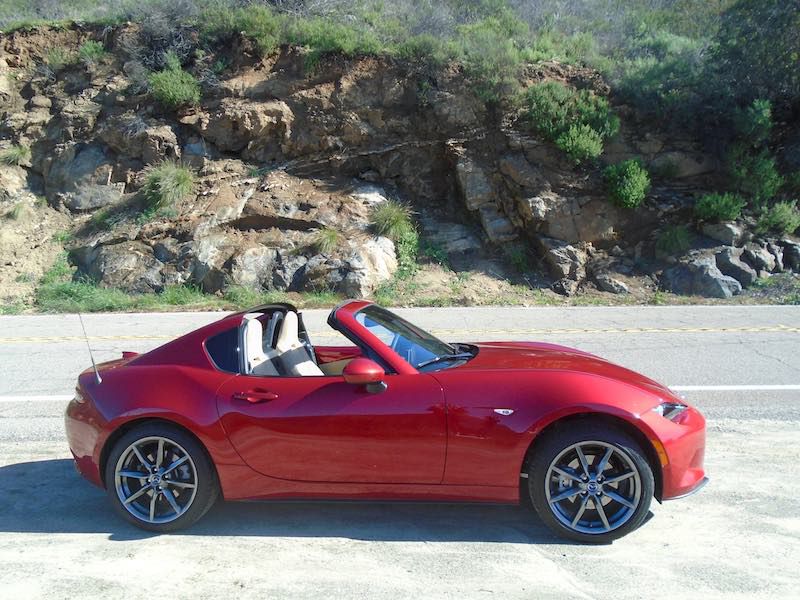
2017 Mazda Miata RF passenger side ・ Photo by Cherise LaPine
Recently, we test-drove the 2017 Mazda MX-5 Miata during the harsh Chicago winter, and had to keep the top up the whole time. We got a chance for a re-do with the all-new Miata RF, which stands for “retractable fastback.” When the roof is closed, this Miata is a coupe, but tricky mechanics enable the car to transform into a roadster.
In late February, we traveled to San Diego for our chance to drive the new Miata RF in a more friendly environment and get a look at that fancy new retractable top. Here are 10 things you need to know about the all-new 2017 Mazda MX-5 Miata RF.
1. The price is reasonable.
The 2017 Mazda M-5 Miata RF Club starts at $31,555, which is $6,640 more than the soft top’s base Sport. A more accurate comparison is to go up a trim level in the soft top, the $28,800 Club, and we see the extra cost to get the RF model is less than $3,000.
The Miata RF Grand Touring, the top trim level, starts at $32,620 and includes better interior appointments and a few extra active safety features. In both models, quoted prices include a manual gearbox; the automatic costs $1,000 or so more, depending on trim level.
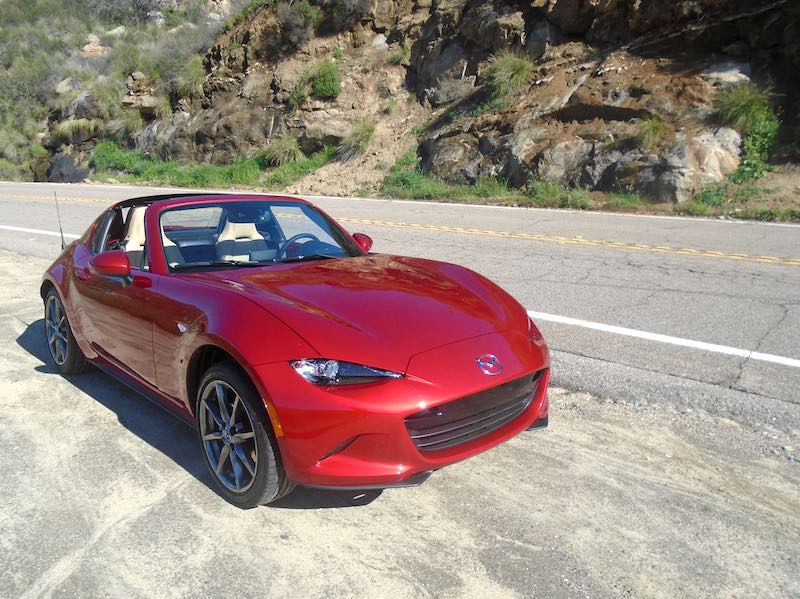
Photo by Cherise LaPine
2. Specs are the same as the soft-top Miata.
The rear-wheel drive Miata RF comes powered by a 2.0-liter 4-cylinder engine that makes 155 horsepower and 148 lb-ft of torque, regardless of trim level, and a 6-speed manual or 6-speed automatic transmission. Shifting is smooth and precise with the manual, and the clutch feels sporty, but still comfortable.
Like the soft-top 2017 Miata, the Miata RF’s fuel economy estimates come in at 26 mpg city/33 mpg highway with the manual transmission, and 26 mpg city/35 mpg highway with the automatic. Truth be told, we weren’t diligent about tracking our fuel economy returns on this trip; the mountainous Southern California terrain would have led to some pretty inconclusive results.
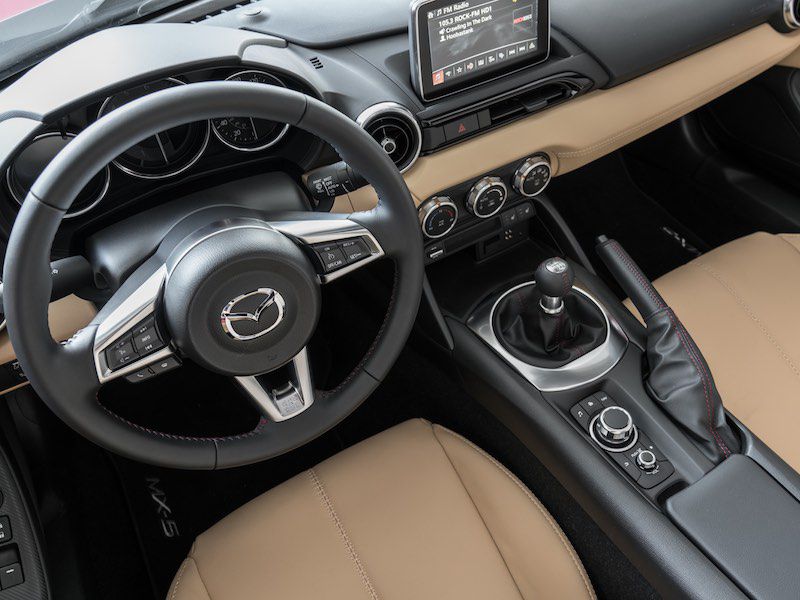
Photo by Mazda
3. Mazda created a limited edition to reward Miata customers’ loyalty.
The Club and Grand Touring trim levels are great, although the Launch Edition trim level was the one to buy. Too bad it’s already gone. The Launch Edition consisted of a limited run of 1,000 cars, offered exclusively to loyal customers before the RF’s official debut, and sold out within a week. Though Launch Edition models really aren’t too different from the average RF, they do get an exclusive black roof panel (while most RFs have a body-color roof panel) and special badging to commemorate the model’s introduction. Lucky Launch Edition buyers were among the very first to drive the Miata RF, too, since deliveries of this limited run started early.
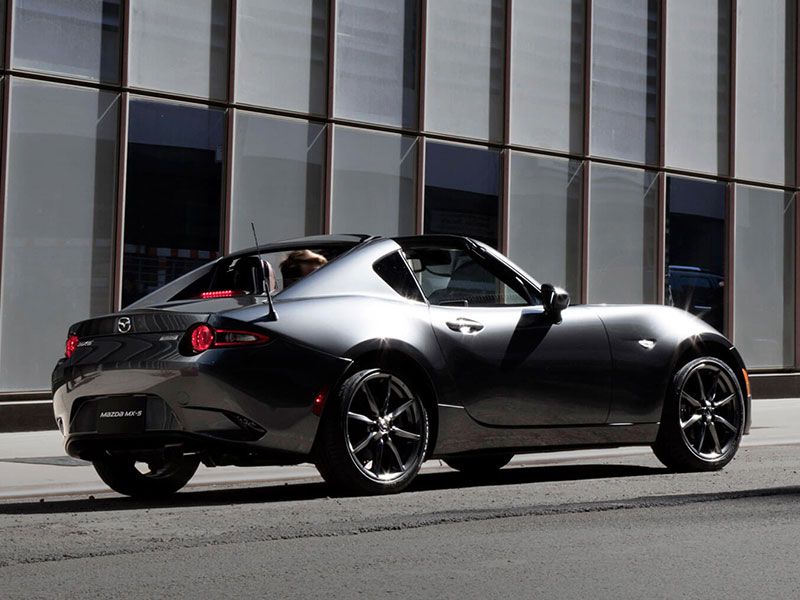
Photo by Mazda
4. The Miata and Miata RF are outliers, but still very important to the brand.
The Miata RF is an anomaly in the brand’s current strategy, not at all practical or family-friendly. Mazda’s program in San Diego also featured an introduction to the redesigned Mazda CX-5 SUV (which we’ve also reviewed) and there were some mixed messages during the various presentations. Namely, Mazda’s team members said that the SUV market is where the brand concentrating almost all its efforts, yet it’s clear they’re still heavily invested in the Miata emotionally as well as financially.
There’s an interesting history lesson here, but we’ll keep it brief. Mazda’s survived tough times, and credits the Miata for changing its fortunes after its 1989 debut. “This is the car that saved us,” explained Mazda’s CEO, Masahiro Moro.

Photo by Cherise LaPine
5. The fancy retractable roof deserves attention from all sides.
There’s historically a hard top Miata option available alongside the regular Miata, an old-school design that requires the driver to un-latch the panel and stash it somewhere. That was never part of the plan for the Miata’s latest generation, though.
According to Julien Montousse, Mazda’s Design Director, the Miata RF was going be a fastback basically from the get-go. “We never approached the Retractable Fastback as a bubble top, as it was in the previous model,” Montousse explained. The approach in taking the Miata’s classic roadster shape and creating a fastback was to keep the profile fluid and avoid adding too many body lines, which Montousse described as “intensity through purity.” Overall, we think, the efforts were a success.
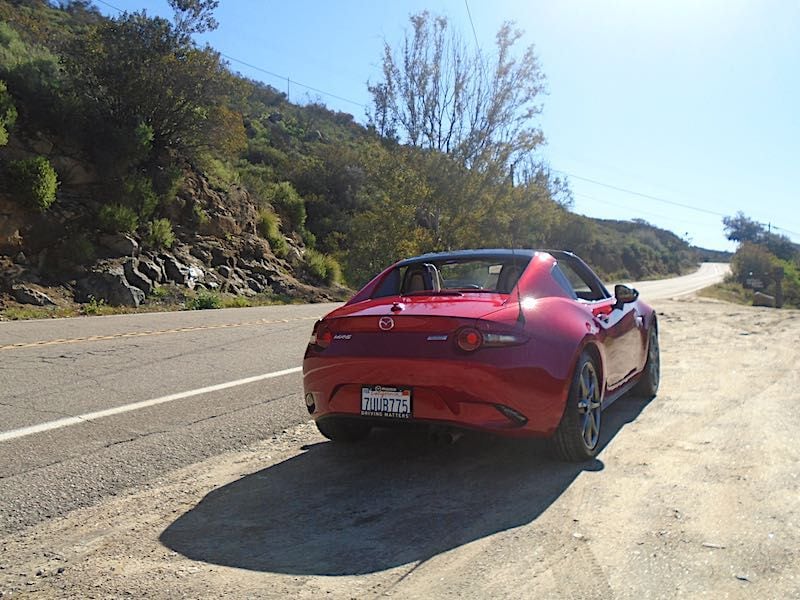
Photo by Cherise LaPine
6. And, from the inside?
The first thing we noticed is that the Miata RF is noticeably quieter than the Miata soft-top. During our recent test drive of the Miata soft-top, we noted that it is pretty quiet and comfortable on surface streets, but transmits a lot of wind noise on the highway. The Miata RF makes improvements on that minor complaint.
It does change the experience somewhat to have solid metal just behind the seats; it’s definitely more coupe-like and less airy than the Miata soft-top. However, it’s not bad, just different.
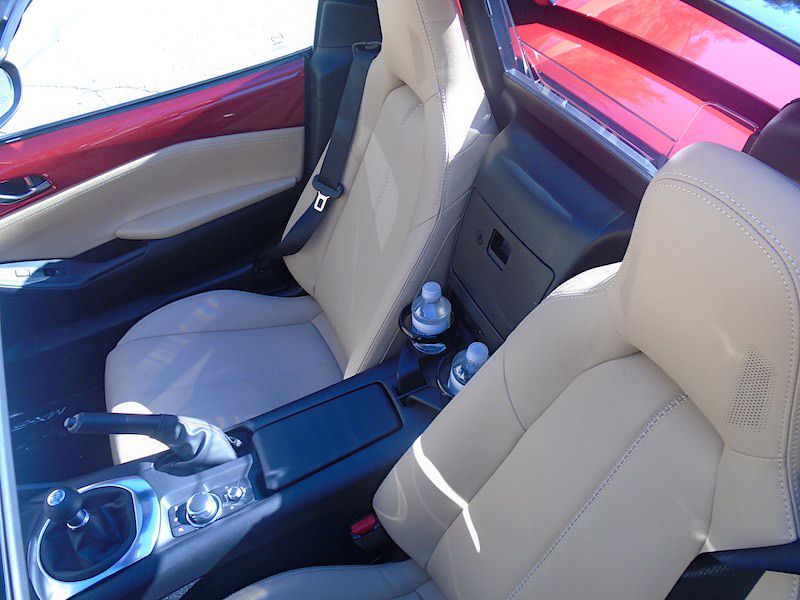
Photo by Cherise LaPine
7. The roof is easy to operate.
To open the Miata RF’s roof, the driver has to hold down a button on the console throughout the process. It takes maybe 20 seconds from close to open (or vice versa), and during that time, an animation pops up on the left side of the gauge cluster to illustrate the roof’s progress (and honestly, this was really fun to watch, almost as fun as watching the actual roof move around).
When the car gets the cue to stow the roof, the rear pillars lift up and the panel overhead slides back, then splits into two pieces. These pieces slip under the pillars and stack together, and the pillars lower into place. Mazda says you can travel at up to 6 mph while the roof is being operated.
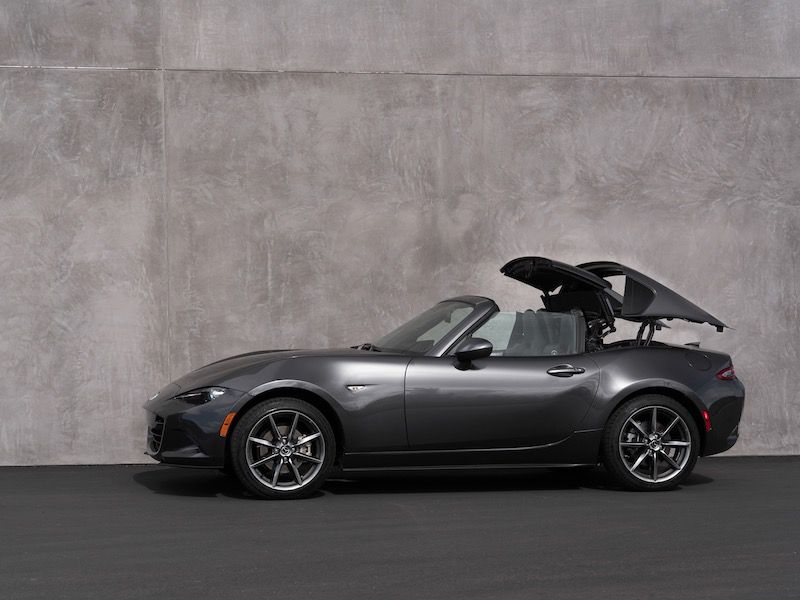
Photo by Mazda
8. Despite all the extra attention, the roof doesn’t change the car that much.
Sure, we just dedicated three pages to talking about the Miata RF’s retractable roof. Yet — and this is a testament to Mazda’s designers and engineers, not a criticism in any way — it’s functionally the same car as the soft-top Miata.
Consider this — the hard roof panels and mechanical components added only 113 pounds to the car’s curb weight. That’s not a lot, really, though it does make a difference in a car this small. Mazda accounted for the weight by tweaking the suspension to maintain optimal driving dynamics. Mazda also managed to maintain the Miata’s trunk dimensions, designing the roof so that the panels and other moving parts fit underneath the rear pillars instead of encroaching on storage space. With a trunk as small as the Miata’s, every cubic inch counts.
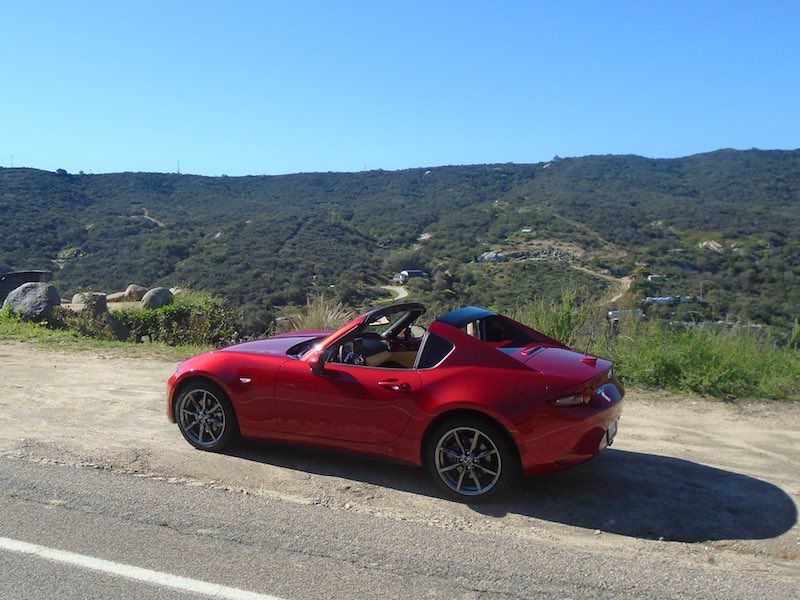
Photo by Cherise LaPine
9. The driving dynamics are great.
Our test drive of the 2017 Miata soft-top took place on city streets and highways, and we were delighted by the car’s acceleration and handling. Since the engine and transmission are the same, and the suspension tuning is really similar (adjusted to compensate for the extra hundred pounds of roof, as mentioned), we weren’t really expecting much difference. Mazda’s designated test route took us out of San Diego and right into the mountains, in the sparsely-populated roads near the border to Mexico. And, in that environment, the Miata RF really shines, inspiring confidence along those sharp turns. It’s easy to shift, reacts quickly to driver input, and stays planted to the road.
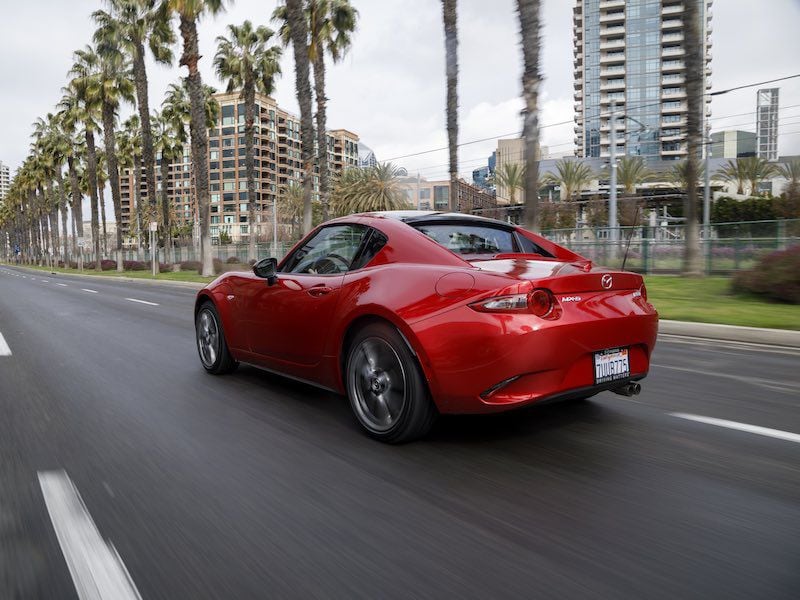
Photo by Mazda
10. There’s not much like it.
The last thing you need to know about the all-new Mazda Miata RF is that it doesn’t have any real competitors. You could suggest, of course, that its closest competition is the soft-top Miata, and you wouldn’t really be wrong. Of course, there’s the Miata’s own cousin, the FIAT 124 Spider, though both companies insist they’re aimed at different markets. What, then, of the entry-level Chevy Camaro and Ford Mustang convertibles, which deliver an entirely different experience — less intimate cabin, rowdier driving dynamics, more macho aesthetics — but at a similar price point? Move up to the Nissan 370Z Roadster and Alfa Romeo 4C, and we’re getting there, but these cars cost about 20 grand, give or take, more than the RF. Truth be told, there isn’t much else out there. The Miata’s managed to survive throughout ups and downs in the convertible market, and the Miata RF is here to celebrate that success.
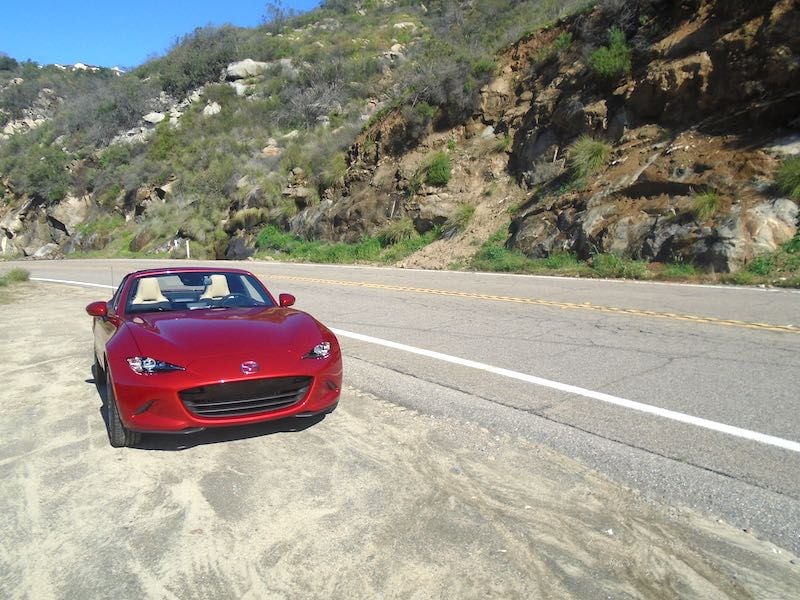
Photo by Cherise LaPine